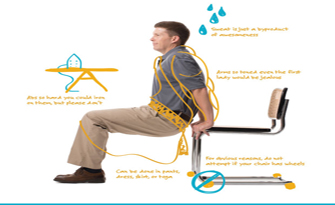How to Recognize and Manage Anxiety in Children
Here are ways to teach kids how to manage their emotions in a healthy way.

Am I too emotional? Is that person following me home from school? What if my mom or brother gets hurt, or I get hurt? I hope my teacher doesn’t call on me in front of the class. What if my friends don’t like me anymore?
These are normal worries a lot of children have. But when they ask these questions repeatedly, have emotional outbursts, or even get shy around other people, should you consider that intense anxiety? How can you teach them how to cope with their emotions?
How many children does anxiety affect?
Researchers recently found that about 7% of children in the U.S., ages three to 17, have been diagnosed with an anxiety disorder. Though it seems low, this percentage represents approximately 4.4 million kids throughout America, and that number continues to rise.
Everyone’s anxiety manifests for different reasons and in a variety of ways, but signs of anxiety may be common among many children.
What are the causes and types of anxiety in children?
Childhood and adolescence present many “firsts” of life: the first time away from home, the first broken bone, the first time dealing with interpersonal conflict. These new, uncharted experiences can often call for powerful emotional responses within the mind and body.
Other times, children experience emotional, physical, or mental forms of trauma or abuse. As a result of these experiences, youths will form anxieties to try and protect themselves from feeling such strong pain as they once did.
As kids face unfamiliar or challenging emotions, anxiety manifests and alerts them that perceived danger is present and that they need to either fight or flee.
Regardless of the source of their worries, children face many forms of anxiety—the same disorders adults may experience, like obsessive-compulsive disorder (OCD), social or generalized anxiety disorders, or post-traumatic stress disorder (PTSD).
Related: Help Your Child Deal with Bullying
How can I know if my child is struggling with anxiety?
Subtly monitoring children’s behavior and responses to various situations may help you know if they’re experiencing anxiety. Watch for patterns of extreme shifts in mood, frequent or repetitive expression of fears, or demonstrations of compulsions like frequently checking for reassurance or unbreakable and precise routines.
You may also notice children become quiet and unexpressive around other kids or adults, and later become lively and personable when in familiar environments.
How can I teach my child how to manage anxiety?
There are many ways to cope. If your child repetitively washes his or her hands, is anxious about going to school every day, or constantly worries about a potential natural disaster, consider the following ideas and tools to help them manage their anxiety:
- Practice deep breathing techniques together to help reduce anxiety levels.
- Anxiety may appear from lack of preparation, or even too much preparation for school and other activities. Help your child find the balance that works well for him or her.
- Consider creative ways to express emotions like drawing, sculpting clay, building with blocks, playing an instrument, exercising, or daily journaling.
- Encourage your child to take the first and last 10 minutes of each day to quietly reflect and practice mindfulness without any external stimulation.
- Communicate often. Build trust and remind your child that he or she can share any experience or fear they have without judgment.
- If you think professional help is needed, don’t be afraid to find a local therapist or school counselor who can meet with your child one-on-one or in a group setting.
Struggling with anxiety can be challenging—especially for children. But with the right support and coping mechanisms, you can help the children in your life learn how to manage their anxiety and allow space for healthy development into adulthood.
Related: 9 Tips to Raising a Confident Child






